SF Crab Boat Owners, Ted Wilson/William Tell House make Crab feed a great success
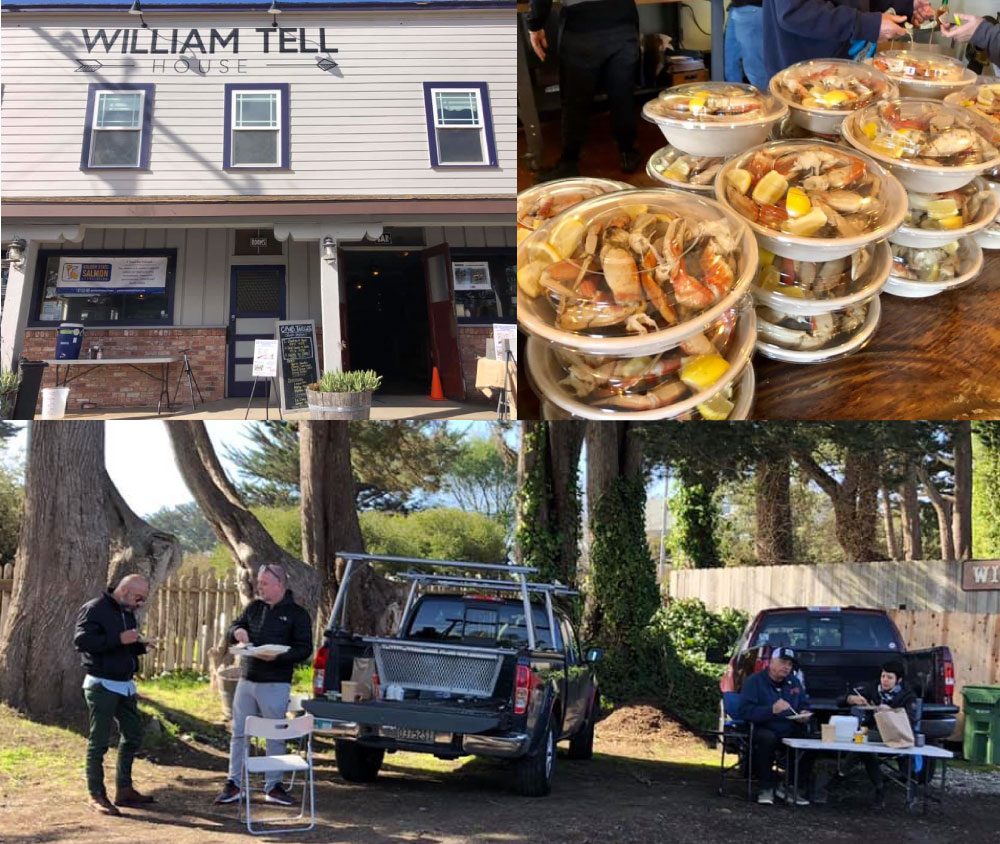
In spite of Covid, GSSA pulled off a safe, successful crab feed fundraiser with a little help from our friends. It occurred the day before Valentine’s Day on a holiday weekend at the William Tell House in the west Marin town of Tomales, not far from Bodega Bay. Tell House owner and GSSA board member Ted Wilson offered the use of his restaurant, with ample outdoor parking and a public park next door for the tailgate party. Tailgaters from far and wide showed up with collapsible tables and chairs and ate all the crab they could. Some even took a bit home. The crab was generously donated by the San Francisco Crab Boat Owners Association and arrived alive and kicking the morning of the event. The early pounding rain before dawn yielded to blue skies that even got balmy by midday. Three veteran volunteer crab crackers helped in the galley, shelling and cleaning the crab, to the chef’s delight. Attendees got the freshest crab, straight from the pot, which brought smiles all around.
Poor Salmon Forecast for 2021 Suggests Restricted Fishing Season
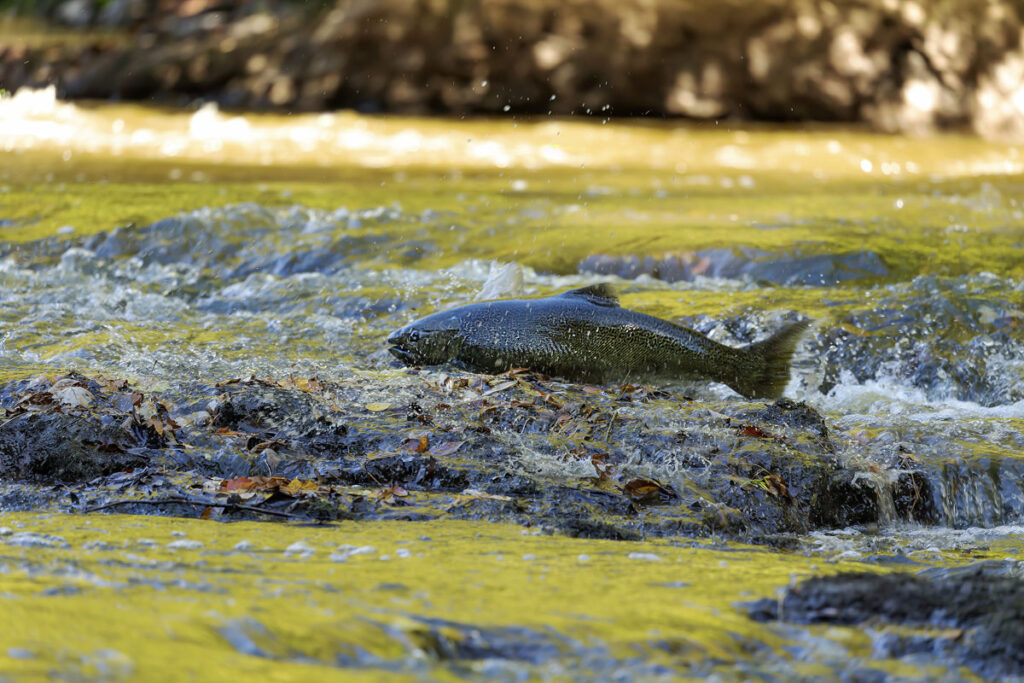
The February 25th Salmon Information meeting forecast there are about 271,000 adult Sacramento Valley salmon now in the ocean off the West Coast. This compares to 473,183 forecast a year ago at this time and suggests some restrictions are likely to be enacted in the 2021 salmon fishing season. In the months ahead, officials with the Pacific Fisheries Management Council will use this forecast and other information to set times and areas open to both sport and commercial ocean salmon fishing for 2021. If restrictions are deemed necessary, we’ll learn of them then.
Although 473,000 plus salmon were forecast last year, after the number caught was added to those that returned to spawn, the real number came out to be 370,000, about 22 percent fewer than forecast.
About 138,000 adult salmon returned to spawn in the Sacramento Basin during 2020, which is 105,000 fewer than the 233,000 salmon predicted to return to spawn. In addition, about 14,000 jacks, or two year old salmon, returned to spawn. The jack number in 2020 is used to forecast the number of adult salmon officials believe are now in the ocean.
One reason for the drop off in the 2021 salmon forecast is chronic over-diversion of Central Valley rivers. 2020 returns were also bolstered by added hatchery production in 2017 that contributed to the 2020 fishery. There was no additional hatchery production to aid 2021 fisheries and returns. It will be several more weeks before we begin to learn what kind of restrictions we might see on fishing this year. We’ll update when we learn more.
Biden signals hope for salmon
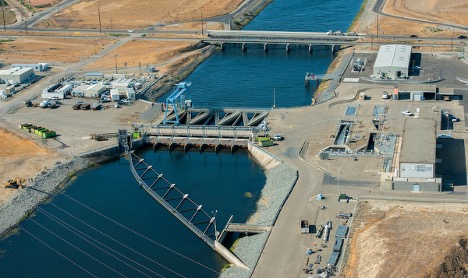
In what might be viewed as a hopeful sign, the Biden administration has asked a federal court to delay for 90 days a deadline in a lawsuit brought by GSSA and allies challenging lax Delta pumping rules enacted by the Trump administration. Rather than continue defending the Trump rules, which illegally allows draining another 600,000 acre feet of northern California salmon river water to almond and pistachio growers in the western San Joaquin Valley, GSSA hopes the new federal administration will bring the litigation to an end and reinstate better protections for salmon and the environment. If such a development doesn’t occur, the case could be on track to be argued in the fall.
The Biden administration had earlier signaled the Delta pumping rules would be under review after GSSA and allies raised the issue with administration officials and DC allies. Among other things, we pointed to political interference that overrode science needed to permit the pumping which has now been well documented. Among the many smoking guns documenting illegal actions taken by the prior administration is this memo written by a top official in the National Marine Fisheries Service who was ordered by a “federal representative” to gloss over legal requirements. We now know from that the “federal representative” is the USFWS regional director Paul Souza, who as of this writing, is still at his post in Sacramento, but probably not for long.
As expected, members of Congress from the San Joaquin Valley are asking the Biden administration to ignore the illegality that occurred and keep the Trump pumping rules in place, no matter the cost to our salmon runs.
GSSA on guard against dangerous pumping this spring
We’ve seen little rain and snow this winter and totals are far under normal. There’s likely to be little runoff during the coming spring months to safely get juvenile salmon that aren’t trucked, out of the Central Valley, through the Delta and to the sea. Whatever snowmelt there is will be captured behind dams. As previously stated the new federal administration hasn’t yet lifted the damaging Delta water diversion rules put in place by the Trump administration. We’re hopeful they will but the wheels of government move slowly so GSSA and allies stand ready to go to court to seek emergency protections if the federal Bureau of Reclamation moves to crank the Delta pumps to dangerously high, salmon killing levels this spring. Same applies if the state tried to crank the state pumps too high.
Coastal Coho advocates worried about hatchery salmon releases
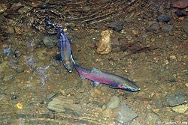
GSSA recently sent a letter to the Lagunitas Technical Advisory Committee regarding the Committee’s concern over Chinook salmon comingling with Coho in Marin County’s Lagunitas Creek. The Committee opposed the establishment of a net pen release site in Bodega Bay a few years ago and more recently voiced opposition to release of hatchery salmon at Sausalito’s Ft. Baker, even though this release site has greatly benefited the fishery with much higher survival. GSSA points out that Chinook and Coho salmon naturally coexist in many coastal streams and pose no threat to each other. The Lagunitas Committee also suggested that hatchery bred salmon are robbing Coho of wild forage out in the ocean. They further suggested that hatchery fish should be released in Stockton, a place known to be deadly to all salmon due to the nearby Delta pumps. GSSA reminded them of why we have hatcheries in California and the extremely low survival of fish released at the hatcheries in low water years.
Water users move to prevent State Water Board from improving river flows, GSSA pushes back
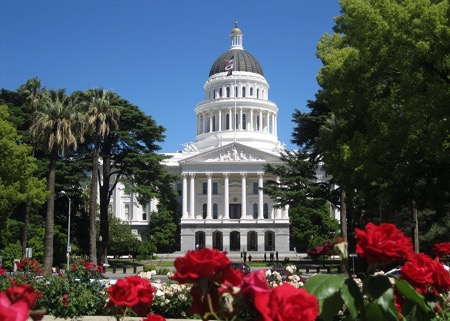
The State Water Board is signaling it might restart its legal duty to review and adjust water diversion rules after being sidelined by Governor Newsom in late 2018. Although the law requires a state water board review every three years, it hasn’t been done in 25 years. Every time the water board has gotten close, whoever the governor is at the time, hears complaints from the big water diverters and stops the state water board from taking action.
Now the major water diverters are trying to talk the Newsom administration into believing they have a new, improved, plan to save salmon and the environment without giving up any water. Oh, and they’re reportedly calling for taxpayers to pay for it. The Newsom team may be happy to have any excuse not to upset the water users’ status quo, especially with the governor facing a recall. Unless the governor wants more environmentally responsible water practices, the State Water Resources Control Board may be hampered from doing its job of reforming and enforcing them. We think they should. At a recent meeting of the water board a large group of fishing and conservation advocates reminded the board of its duty and that two years have gone by since the water board last took meaningful action to restore natural conditions in the rivers. A return to negotiations sought by the big water users groups only serves to delay and preserve the environmentally damaging status quo.
Making Progress on a key Central Valley river
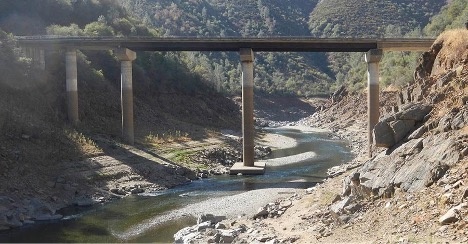
As recently as the mid 1980’s the Tuolumne still had 40,000 salmon returning to it. These days it’s more like 1,000 and most are probably strays. That’s largely because the San Francisco Public Utilities Commission staff and the two big ag water districts it shared the river with divert too much river water. GSSA is working with allies to push San Francisco towards a less environmentally destructive position on water diversions. San Francisco and the other two water agencies are refusing to reduce diversions in spite of the state telling them more water needs to be left in the river to rebuild salmon runs and increase water flowing through the Delta to the Bay. Most San Franciscans probably have no idea their water agency is harming salmon and the environment. GSSA is taking steps to change that and hopefully the SFPUC’s environmentally damaging ways. You can help here.
Trump Interior Secretary Bernhardt declared salmon are recovered because he said so
On the way out the door, Trump’s Interior Secretary, David Bernhardt left a present for the ag water districts in the San Joaquin Valley. Bernhardt wrote a letter stating that the federal requirement to rebuild Central Valley salmon stocks, decimated by the federal Central Valley water Project, has been fulfilled. Except it hasn’t. In fact, it’s not even close. Federal law says the runs will be rebuilt when we see 990,000 adult salmon returning to spawn every fall in the Central Valley. In 2020, an estimated 138,000 adult salmon returned and even that figure is disputed as being too high by some. Nonetheless, Bernhardt told the big ag water districts that take the water needed by salmon that they no longer have to pay into a fund used to rebuild salmon runs. In the letter, dated January 19, Bernhardt orders the USFWS and report back to him within 30 days although he leaves no forwarding address. Maybe he headed for Cancun trying to get away from cold winter weather. GSSA has alerted members of Congress who are expected to take the matter up with the new Biden Administration and correct this fraud.
Salmon problems from lack of vitamin B1
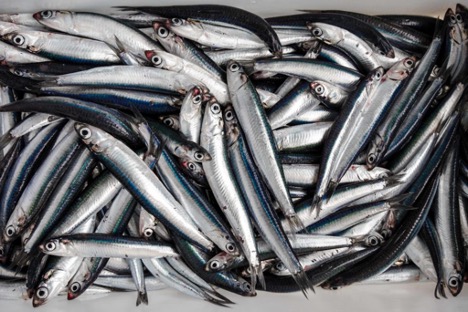
Hatchery managers noticed something disturbing last year when their fish hatched. Some swam in a corkscrew motion, some were deformed, some had other problems. After testing to identify a suspected disease pathogen they concluded the fish were suffering from a shortage of vitamin B1, also known as thiamine. Apparently their parents, while feeding in the ocean, gorged on anchovies and didn’t have access to other food sources. Eating only anchovies can transfer a compound that can naturally occur in anchovies and accumulate as it moves up the food chain. The compound neutralizes vitamin B1 which salmon would naturally get in a more varied diet that might include krill, squid, herring, etc. The hatchery managers discovered they weren’t the first to see this condition in salmon and they learned it can be treated by dosing the fish with vitamin B1, which they did. It worked. Salmon biologists with the state say that naturally spawned salmon apparently suffered a similar fate but unlike the hatchery fish, no one treated them with B 1. The upshot could be another factor taking salmon numbers down.
